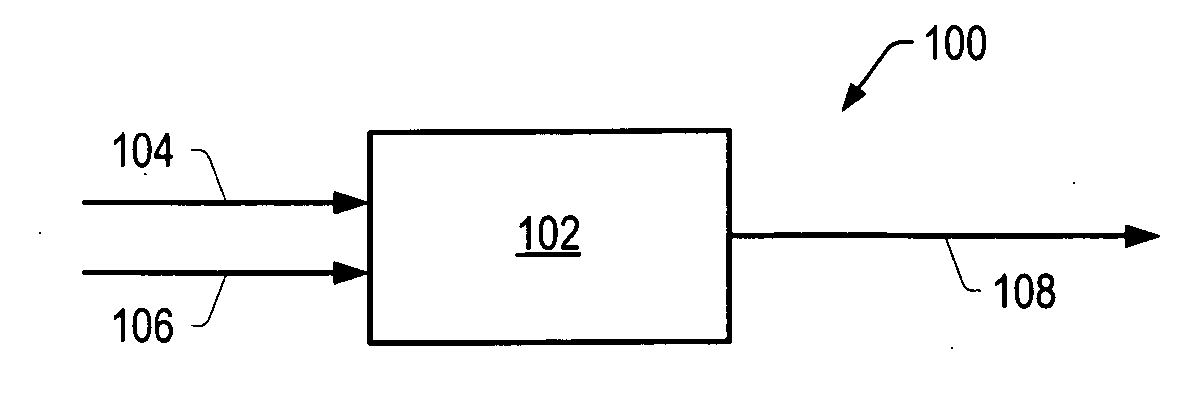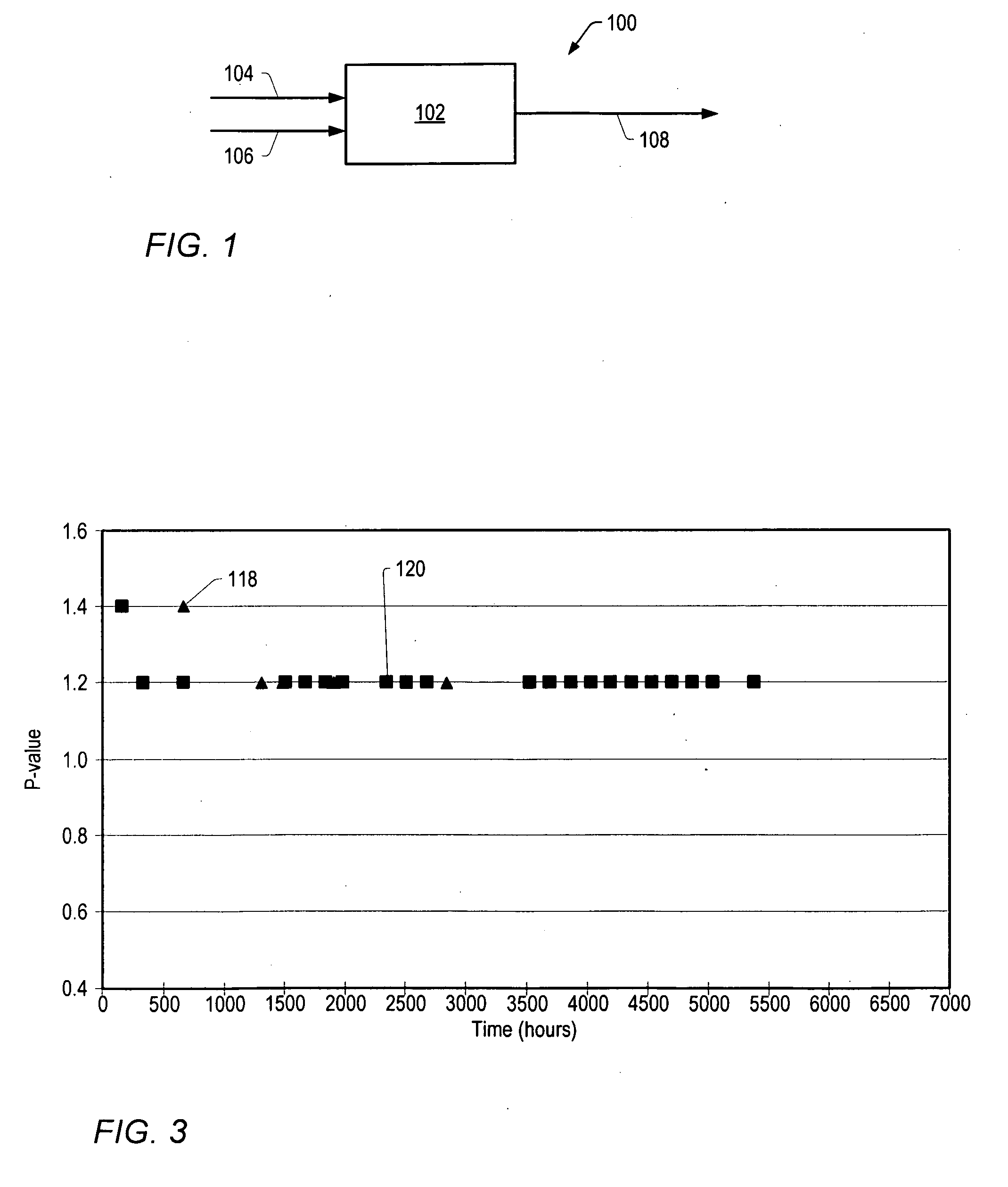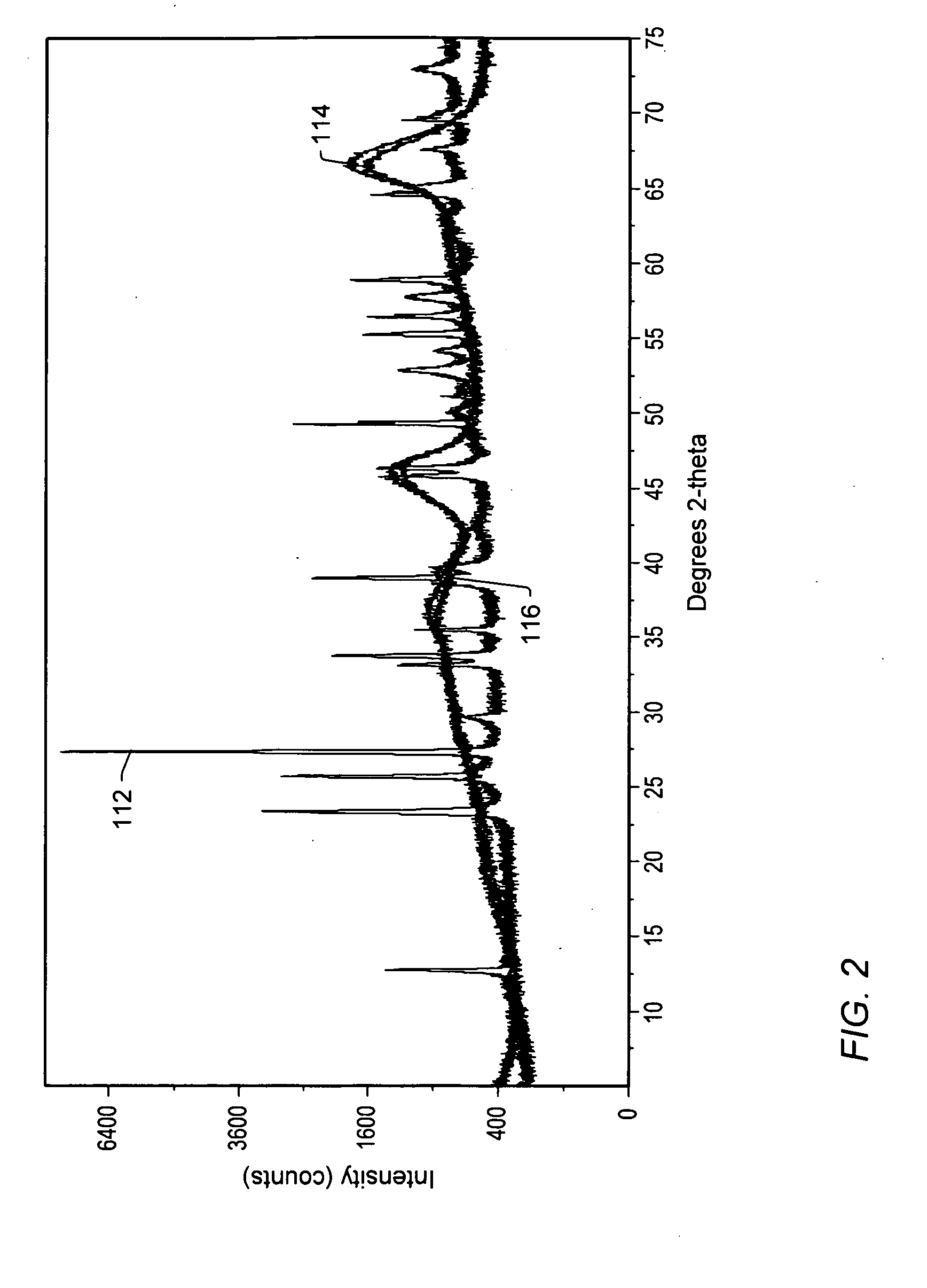Catalysts, preparation of such catalysts, methods of using such catalysts, products obtained in such methods and uses of products obtained
a catalyst and catalyst technology, applied in the field of catalysts, can solve the problems of disadvantaged crude undesirable for conventional transportation and/or treatment facilities, high cost of hydrogen production and/or transportation to treatment facilities, and large amount of hydrogen, etc., to achieve high surface area catalyst, reduce viscosity, and high viscosity
- Summary
- Abstract
- Description
- Claims
- Application Information
AI Technical Summary
Benefits of technology
Problems solved by technology
Method used
Image
Examples
example 1
Preparation of a Column 6 Metal Catalyst Having at Most 10 wt % Molybdenum and a Surface Area of at Least 340 m2 / g
[0199]A support (4103.4 grams) that contained 0.02 grams of silica and 0.98 grams alumina per gram of support was combined with molybdenum trioxide (409 grams) to form a Mo / support mixture. With a muller mixer running, deionized water (2906.33 grams) was added to the Mo / support mixture and the mixture was mulled until a loss on ignition (after 1 hour at 700° C.) of 58% was obtained. During comulling, the compactness of the powder was monitored every 20 to 30 minutes and 1 wt % (based on loss of ignition) of deionized water was added to the mixture until the loss on ignition value was obtained. The pH of the compact Mo / support powder was 4.63.
[0200]The compact Mo / support powder was extruded using 1.3 mm trilobe dies to form 1.3 mm trilobe extrudate particles. The extruded particles were dried at 125° C. and then calcined at 537° C. (1000° F.) for two hours to form the cat...
example 2
Preparation of a Column 6 Metal Catalyst Having at Least 10 wt % Molybdenum and a Surface Area of at Least 340 m2 / g
[0201]A support (3000 grams) that contained 0.02 grams of silica and 0.98 grams alumina per gram of support was combined with molybdenum trioxide (797.84 grams) to form a Mo / support mixture. With a muller running, deionized water (4092.76 grams) was added to the Mo / support mixture, and the mixture was mulled until a loss of ignition of 0.5787 grams per gram of mixture was obtained (for about 45 minutes). The pH of the Mo / support mixture was 3.83.
[0202]The Mo / support mixture was extruded using 1.3 mm trilobe dies to form 1.3 trilobe extrudate particles. The particles were dried at 125° C. and then calcined at 537° C. (1000° F.) for two hours. The compacted bulk density of the extrudates was 0.545 g / mL. The resulting catalyst contained, per gram of catalyst, 0.133 grams of molybdenum, with the balance being support. The molybdenum catalyst is a monomodal catalyst having a...
example 3
Catalyst Having a Surface Area of at Most 250 m2 / g
[0206]A comparative catalyst was prepared in the following manner. MoO3 (94.44 grams) was combined with wide pore alumina (2742.95 grams) and crushed and sieved alumina fines having a particle size between 5 and 10 micrometers (1050.91 grams) in a muller. With the muller running, nitric acid (43.04 grams, 69.7 M) and deionized water (4207.62 grams) were added to the mixture and the resulting mixture was mulled for 5 minutes. Superfloc® 16 (30 grams, Cytec Industries, West Paterson, N.J., USA) was added to the mixture in the muller, and the mixture was mulled for a total of 25 minutes. The resulting mixture had a pH of 6.0 and a loss on ignition of 0.6232 grams per gram of mixture. The mulled mixture was extruded using 1.3 mm trilobe dies to form 1.3 trilobe extrudate particles. The extrudate particles were dried at 125° C. for several hours and then calcined at 676° C. (1250° F.) for two hours to produce the catalyst. The catalyst co...
PUM
| Property | Measurement | Unit |
|---|---|---|
| temperature | aaaaa | aaaaa |
| pressure | aaaaa | aaaaa |
| temperature | aaaaa | aaaaa |
Abstract
Description
Claims
Application Information
 Login to View More
Login to View More - R&D
- Intellectual Property
- Life Sciences
- Materials
- Tech Scout
- Unparalleled Data Quality
- Higher Quality Content
- 60% Fewer Hallucinations
Browse by: Latest US Patents, China's latest patents, Technical Efficacy Thesaurus, Application Domain, Technology Topic, Popular Technical Reports.
© 2025 PatSnap. All rights reserved.Legal|Privacy policy|Modern Slavery Act Transparency Statement|Sitemap|About US| Contact US: help@patsnap.com



